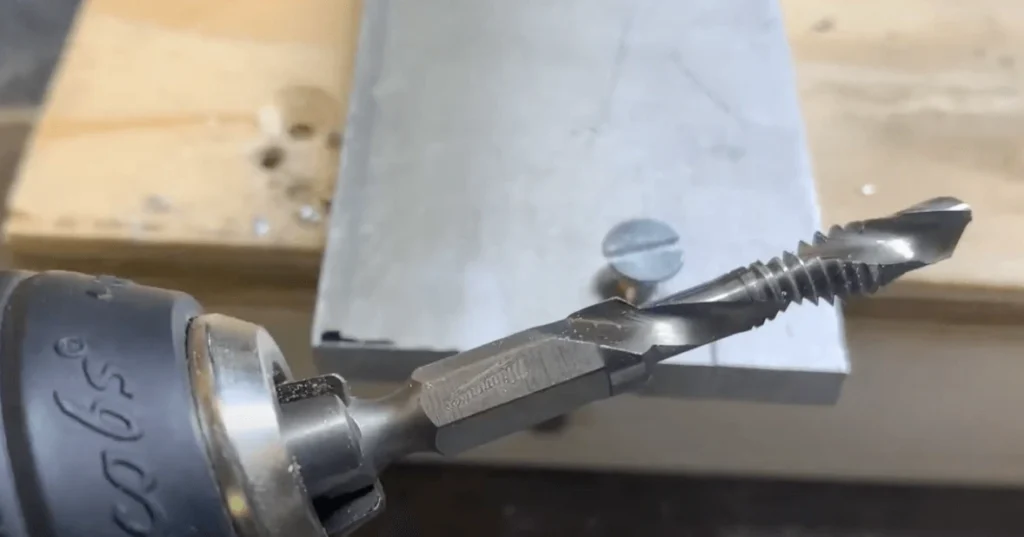Are you embarking on a DIY project that involves threading pipes? The world of plumbing and construction might seem daunting at first, but fear not! One fundamental aspect you need to understand is the importance of choosing the right drill bit size for your 1/8 NPT tap. In this guide, we’ll take you through everything you need to know about selecting the perfect drill bit size to ensure a successful threading process. So, grab your hard hat and let’s dive in!
Picture this: You’ve got a vision of crafting a customized piece using threaded pipes. To bring that vision to life, understanding the nuances of threading is crucial. Choosing the right drill bit size is akin to laying the foundation for a strong structure.
Contents
Understanding the Basics
2.1 What is a 1/8 NPT Tap?
Before diving into drill bit sizes, let’s grasp the concept of a 1/8 NPT tap. NPT stands for National Pipe Taper, and it’s a U.S. standard for tapered threads on threaded pipes. A 1/8 NPT tap specifically refers to a tap that creates threads for a pipe with an outer diameter of 1/8 inch.

2.2 Importance of Choosing the Right Drill Bit Size
Think of your threading project as a puzzle. The drill bit size you choose is the missing piece that must fit seamlessly into the puzzle. Using the wrong size can lead to threads that are too loose or too tight, resulting in leaky connections or difficult installations.
Factors to Consider
3.1 Material of the Workpiece
The material you’re working with plays a significant role in determining the drill bit size. Softer materials may require smaller drill bits, while harder materials demand larger ones.
3.2 Thread Depth
The depth of your threads matters. It’s a delicate balance – too shallow, and the connection might not hold; too deep, and you risk damaging the pipe.
3.3 Thread Pitch
Thread pitch refers to the distance between threads. Understanding this helps you choose a drill bit that creates threads of the correct pitch.
3.4 Lubrication
Lubrication might not be a physical factor, but it’s essential. Proper lubrication ensures smoother threading, reducing the chances of friction-related mishaps.
Calculating the Drill Bit Size
4.1 Using the Right Formulas
Calculating the ideal drill bit size involves a bit of math, but don’t worry – it’s simple math! By using the right formulas, you can determine the diameter of the drill bit that suits your needs.
Common Mistakes to Avoid
5.1 Going Too Small
Using a drill bit that’s too small can result in threads that are prone to stripping. This weakens the connection and might lead to leaks.
5.2 Going Too Large
On the other hand, a drill bit that’s too large can damage the integrity of the pipe’s threads, making it difficult to secure connections.
5.3 Disregarding Lubrication
Lubrication might seem insignificant, but it’s a game-changer. Don’t skip this step if you want smooth, precise threads.
Step-by-Step Guide
6.1 Gather Your Tools
Prepare your tools: the 1/8 NPT tap, a drill, safety gear, and of course, the right drill bit.
6.2 Mark Your Entry Point
Use a marker to clearly indicate where you’ll be drilling.
6.3 Choose the Right Drill Bit
Based on the material, thread depth, and pitch, select the perfect drill bit size.
6.4 Begin Drilling
Start drilling slowly and steadily. Let the drill do the work.
6.5 Keep it Cool and Lubricated
Remember, lubrication is your friend. Keep the area cool and well-lubricated throughout the process.
6.6 Using the 1/8 NPT Tap
Once the hole is ready, carefully use the 1/8 NPT tap to create threads that match its specifications.
Safety Precautions
7.1 Eye and Ear Protection
Safety first! Always wear protective gear, especially eye and ear protection.
7.2 Proper Tool Handling
Know how to handle your tools safely to avoid accidents.
Troubleshooting
8.1 Threads Feeling Tight
If the threads feel tight, double-check the drill bit size. You might have gone a tad too large.
8.2 Threads Feeling Loose
Loose threads? Reevaluate the drill bit size – it might be too small.
Conclusion
Congratulations, you’ve just mastered the art of choosing the right drill bit size for your 1/8 NPT tap! By understanding the materials, calculations, and step-by-step process, you’re now equipped to tackle your threading projects with confidence.
FAQs
- Q: Can I use any drill bit for a 1/8 NPT tap?
- A: No, it’s crucial to choose the correct drill bit size based on the material and specifications.
- Q: Why is lubrication so important?
- A: Lubrication reduces friction, ensuring smoother and more precise threading.
- Q: What happens if I use a drill bit that’s too small?
- A: Using a drill bit that’s too small can lead to stripped threads and leaky connections.
- Q: How do I know if I’ve chosen the right thread pitch?
- A: Refer to the specifications of the 1/8 NPT